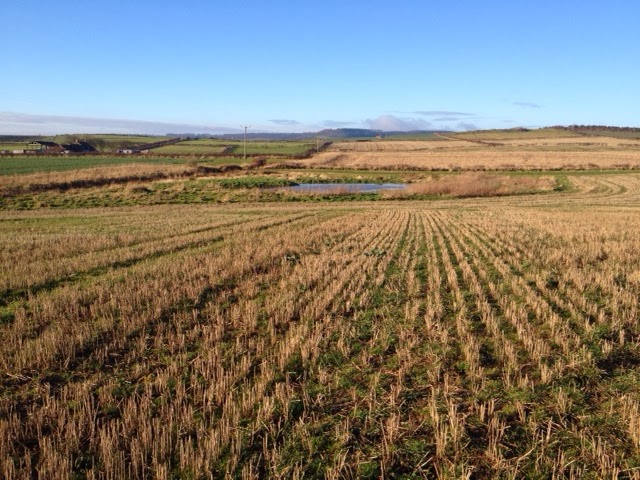It has been quite a while since my last posting here. Winter birding at Long Nab is particularly hard work and the rewards are especially hard won at this time of year. Consequently my effort reduces significantly and I tend to look for the chance to find overseas birding opportunities. Although I managed a few January visits to Long Nab, I spent a significant portion of the month leading a tour for Birdwatching Breaks in Northern India (see trip report here and some images here.) and thus it has only been in the past 10 days that my visit frequency has increased in the Long Nab area.
A staple of winter birding in the area tends to be a few Red-throated Divers, large auks and just occasionally the odd duck on the move. Most seawatches tend to involve counting Gannets, Fulmars and gulls moving along the coast and very little else. Still, this is not without the occasional reward and an adult Iceland Gull flying south along the cliffs on Monday was very pleasing. A Great Northern Diver flying south was also a pleasant surprise and the first of the year here, although one spent many weeks in the harbour before sadly being found dead not too long ago.
The area is farmed within the Higher Level Stewardship scheme and as a result there are some nice stubbles left during the winter. These attract some decent numbers of Skylarks and this winter there has been a flock of Lapland Buntings present. The numbers are rather erratic and generally vary in the range of one to eight. Disappointingly they have been almost impossible to gets views of on the ground and if not in the stubble they are in the nearby rape fields and either way hidden for most of the time.
Tuesday and again this morning saw the first real signs of spring movement. Highlights of Tuesday's seawatch included an impressive flock of ca 220 Pink-footed Geese moving north offshore, plus Eider, Goosander, Common Scoter and a trickle of Shelduck on the move. A Grey Heron flew south and a few Skylarks were seen coming in off the sea and / or flying south. The first vismigging Linnet and alba Wagtail sp of the spring were also noted. This morning the movement of Skylarks and Linnets continued with a Siskin and a few Starlings adding to the variety. Slim pickings still, but encouragement and along with the mild, quite pleasant weather, signs that spring is not too far away now.
Further evidence that the breeding season is not too far away is an increase in bird song. At least seven Skylarks were staking out their territories, with Dunnock, Chaffinch, Song Thrush and Robin all in full song this morning.
 |
| Skylark - one of seven birds staking territories out this morning |
A new development since the autumn is that we have a new small pool in the corner of one of the fields. Although only small in size it will hopefully prove attractive to passing waders which may drop in to feed for short periods. A party of Lapwings were seen to come in off the sea and drop straight onto it last week and Snipe have been found there, so these are encouraging early signs.
 |
| Although small, hopefully the newly filled scrape may attract occasional passing waders. |
No comments:
Post a Comment